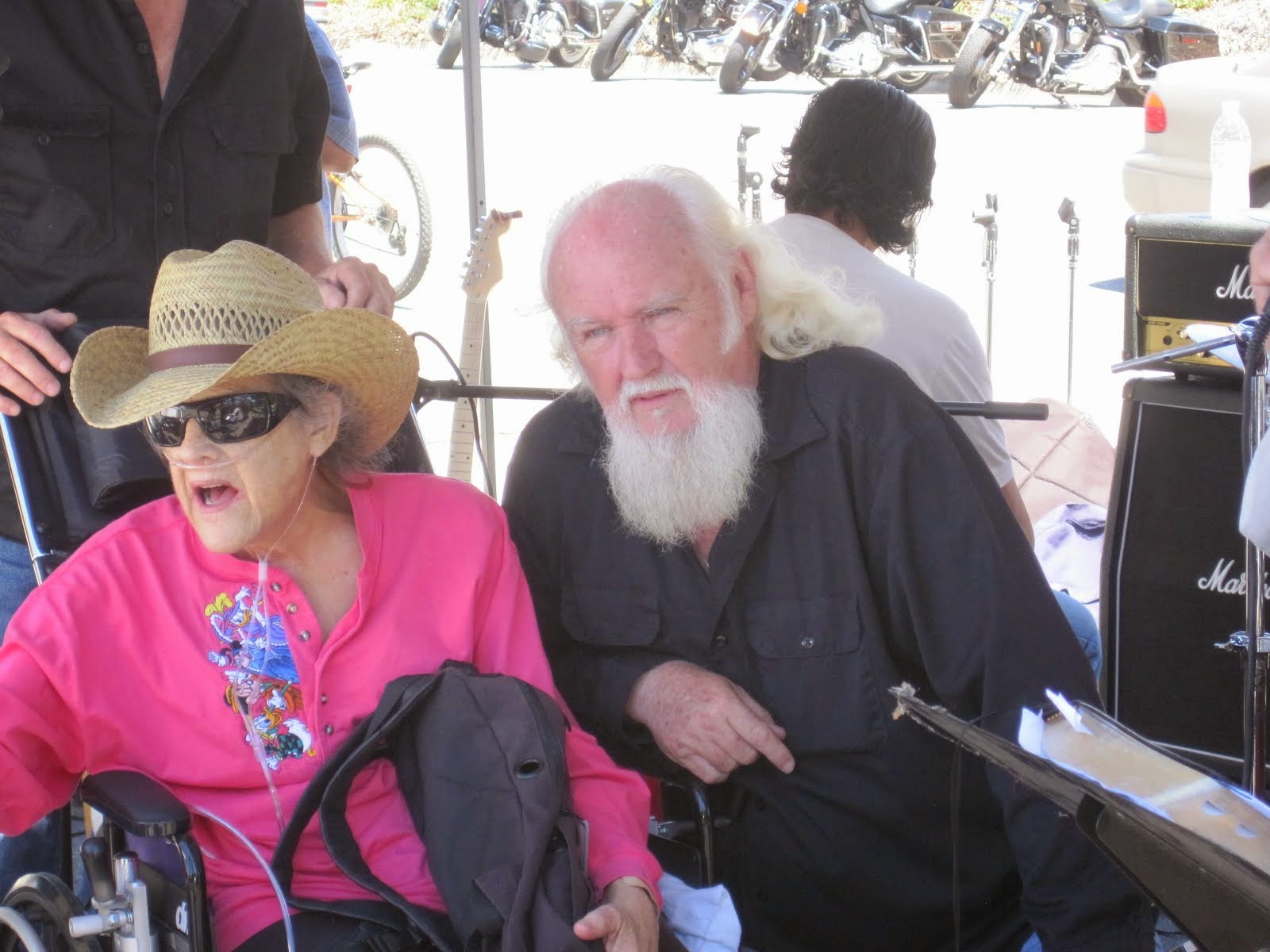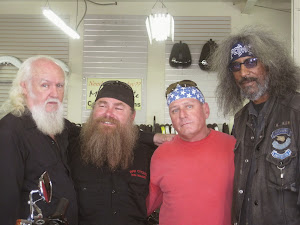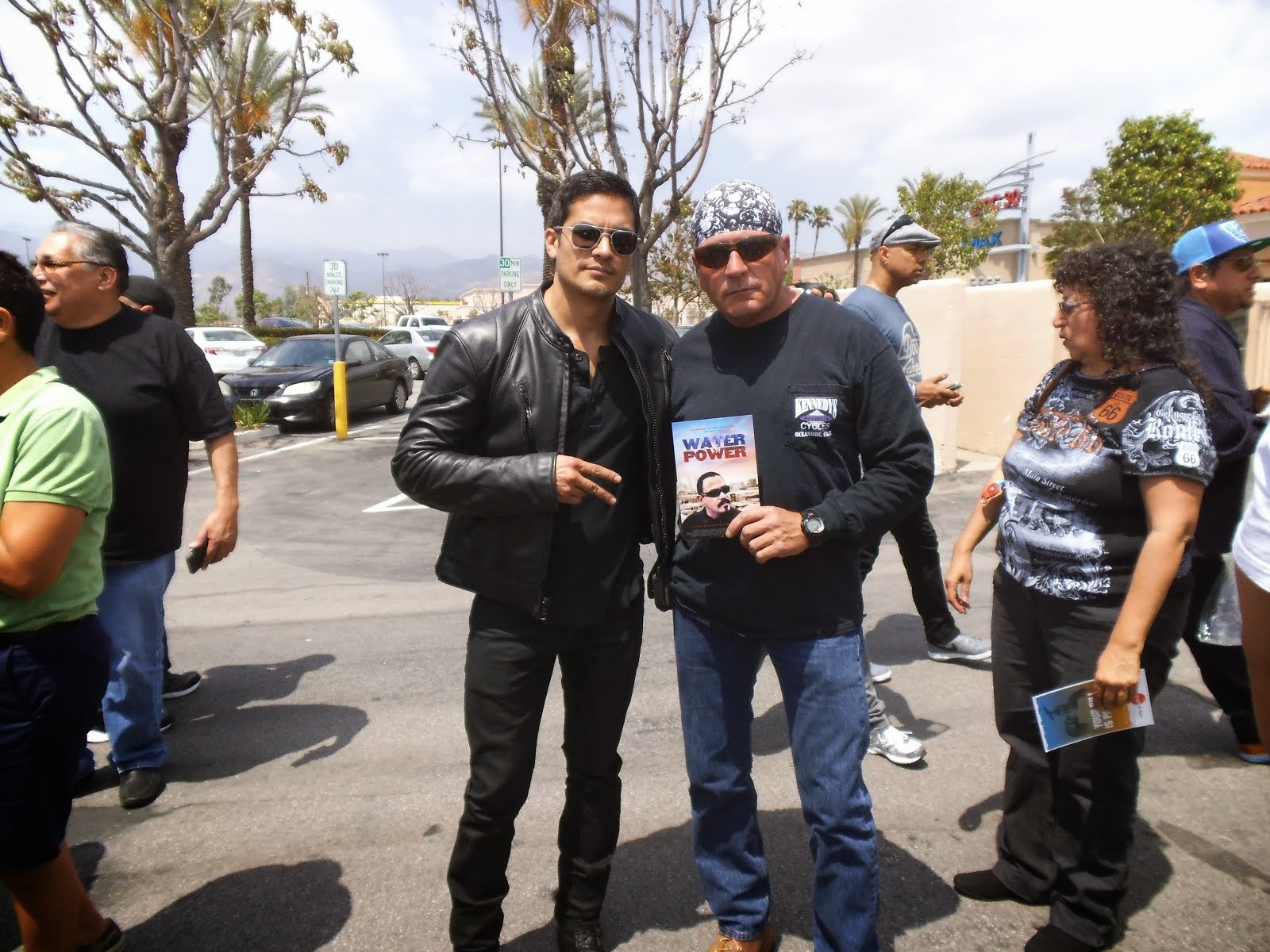OFF THE WIRE
LinkedIn Groups
• Group: Motorcycle R&D
• Discussion: Is motorcycling becoming an old man's hobby and therefore slightly uncool to the under 35 year old consumer?
We believe the bigger obstacles are:
- Licensing laws
- Insurance Costs
- Lack of exciting entry level products
- Licensing laws:
Here in Europe a major factor affecting the supply of new riders to the market has been the introduction of various EU Driving License Directives.
`2nd Directive' has been in force in Europe since 1996: Under 21s must take test on 120-125cc, then 33bhp limit for 2 years Over 21s may take `Direct Access' test on 500cc for unrestricted license.
`3rd Directive' will apply from 2013: Seeking to encourage progressive access by introducing additional 35kw (47bhp) restriction until an additional test is taken on machine over 600cc. Age of Direct Access might be raised to 24.
Gen Y'ers want to get the bike they lust after now not in 5 years time. Unless new models are developed which fit within the restrictions it is reasonable to predict that the 3rd European Driving Licence Directive will push potential new motorcyclists into abstaining for even longer.
- Insurance Costs:
The high cost of insurance is also a major factor affecting sales in the 15 to 34 age
range. The soaring cost of litigation, expensive vehicle repair bills and high volumes
of claims by inexperienced bikers has made the cost of insuring motorcycles
prohibitively expensive for many young riders. There is a significant difference in the insurance classification of available models; for example the popular learners bike, the CBF500 (group 9) and the 600cc supersports class (group 14) which rules out the supersports for the majority without a significant `No claims bonus'.
ACEM's figures show that for a young rider the cost of insurance can now easily outweigh the cost to purchase a machine and unlike the initial purchase this is an annual cost.
- Lack of exciting entry level products:
Today the introduction of Euro2 and Euro3 EU emissions regulations and changes in
both the European and Japanese licensing laws have meant that the lightweight
supersport segment is practically un-catered for. As a result some of the milder and
more forgiving 500-750cc machines have migrated into beginner's bike list. First
bikes tend to be 50bhp or less and 180kg or less. The further a bike is above those
limits, the more cautious new riders appear to be about purchasing.
The Suzuki GS500 and Honda CB500's are now considered by many the best choice
as a first bike: relatively light, inexpensive, not too much power (consequently
cheaper to insure), and available new and used. The current CB500's/CG500's offer a
sensible package but they are not evocative or highly desirable, they do not inspire young
people.
This void of desirable products offered at entry level adds to the licensing restrictions
in pushing young riders into abstaining.
The now discontinued 250cc two stroke and 400cc four stroke class of `Lightweight Supersports' represented a good balance of looks, performance and affordability to fill the void between the `learner' bikes and outright supersports 600s. Other than Kawasaki's Ninja 250 where are these products today?
The high re-sale value of 10 year old second hand Supersport 400s (RVF400's still sell for 3k to 4k) suggests that many consumers in this market already decide against buying new and look for privately sold models instead; independently financing the purchase, forgoing dealer warranties and after sales care.
Posted by Mark Wells
skip to main |
skip to sidebar




Bill & Annie

Art Hall & Rusty


NUFF SAID.......


































































OOHRAH

ONCE A MARINE,ALWAYS A MARINE

GIVING BACK


MOUNT SOLEDAD














BIKINI BIKE WASH AT SWEETWATER










FRIENDS





BILL,WILLIE G, PHILIP










GOOD FRIENDS


hanging out

brothers


GOOD FRIENDS

Good Friends

Hanging Out




Bill & Annie
Art Hall & Rusty
Art Hall & Rusty


NUFF SAID.......



















NUFF SAID......



























Mount Soledad




BALBOA NAVAL HOSPITAL
RUSTY DANNY

ANNIE KO PHILIP

PHILIP & ANNIE

OUT & ABOUT

OOHRAH...

OOHRAH
ONCE A MARINE,ALWAYS A MARINE

ONCE A MARINE,ALWAYS A MARINE
American Soldier Network GIVING BACK

GIVING BACK
CATHY & BILL
PHILIP & DANNY & BILL

MOUNT SOLEDAD
bills today
EMILIO & PHILIP
WATER & POWER
WATER & POWER
bootride2013



BIKINI BIKE WASH AT SWEETWATER







ILLUSION OPEN HOUSE

FRIENDS


GOOD FRIENDS



BILL,WILLIE G, PHILIP









GOOD FRIENDS

GOOD FRIENDS
Friends
- http://www.ehlinelaw.com/losangeles-motorcycleaccidentattorneys/
- Scotty westcoast-tbars.com
- Ashby C. Sorensen
- americansoldiernetwork.org
- blogtalkradio.com/hermis-live
- davidlabrava.com
- emiliorivera.com/
- http://kandymankustompaint.com
- http://pipelinept.com/
- http://womenmotorcyclist.com
- http://www.ehlinelaw.com
- https://ammo.com/
- SAN DIEGO CUSTOMS
- www.biggshd.com
- www.bighousecrew.net
- www.bikersinformationguide.com
- www.boltofca.org
- www.boltusa.org
- www.espinozasleather.com
- www.illusionmotorcycles.com
- www.kennedyscollateral.com
- www.kennedyscustomcycles.com
- www.listerinsurance.com
- www.sweetwaterharley.com

Hanging out

hanging out
Good Friends

brothers
GOOD FRIENDS

EMILIO & SCREWDRIVER

GOOD FRIENDS
Danny Trejo & Screwdriver

Good Friends
Navigation
Welcome to Bikers of America, Know Your Rights!
“THE BIKERS OF AMERICA, THE PHIL and BILL SHOW”,
A HARDCORE BIKER RIGHTS SHOW THAT HITS LIKE A BORED AND STROKED BIG TWIN!
ON LIVE TUESDAY'S & THURDAY'S AT 6 PM P.S.T.
9 PM E.S.T.
CATCH LIVE AND ARCHIVED SHOWS
FREE OF CHARGE AT...
BlogTalkRadio.com/BikersOfAmerica.
Two ways to listen on Tuesday & Thursday
1. Call in number - (347) 826-7753 ...
Listen live right from your phone!
2. Stream us live on your computer: http://www.blogtalkradio.com/bikersofamerica.
A HARDCORE BIKER RIGHTS SHOW THAT HITS LIKE A BORED AND STROKED BIG TWIN!
ON LIVE TUESDAY'S & THURDAY'S AT 6 PM P.S.T.
9 PM E.S.T.
CATCH LIVE AND ARCHIVED SHOWS
FREE OF CHARGE AT...
BlogTalkRadio.com/BikersOfAmerica.
Two ways to listen on Tuesday & Thursday
1. Call in number - (347) 826-7753 ...
Listen live right from your phone!
2. Stream us live on your computer: http://www.blogtalkradio.com/bikersofamerica.
Good Times
Hanging Out

Key Words
- about (3)
- contact (1)
- TENNESSEE AND THUNDER ON THE MOUNTAIN (1)
- thinking (1)
- upcoming shows (2)
Blog Archive
-
▼
2010
(4242)
-
▼
October
(447)
- Police continue to harass citizens who record them
- Two Notorious bikie gang members arrested after ba...
- Australia, Iron bar killer jailed for 11 years
- CHARLESTON, W.Va.Two former Pagans sentenced to pr...
- Mob turncoat is sentenced in NYC to time served
- WASHINGTON DC, Motorcycle Group Supports Military ...
- AUSTRALIA, Bikie gang threat can't be ignored
- Hells Angels to sue McQueen
- Johnston City, Ill. Deputies arrest Outlaws member...
- NEW YORK:Bikers in Halloween Costumes Terrorize Up...
- Hello San Diego Volunteers
- Richmond, Va.Jury to begin deliberations in Outlaw...
- Drug accusations fly in court
- Pagans case: School bus driver who helped discard ...
- A BIKER, brawl in the heart of Bondi has left one...
- Poker run benefits Hillsborough Vietnam memorial
- Outlaws gang trial to resume Friday
- Court documents: Santa Clara cop did favors for He...
- OMCG member charged over two shootings – Petersham
- Massachusetts, Settlement gives bikers refunds
- THE top two leaders of bikie gang Notorious will r...
- Two former Pagans sentenced to probation on drug-r...
- Can ATK Cruisers Help Harley-Davidson?
- It’s A Club! Not A Gang!
- November 4th - 7th 10th Annual Rocky Point Rally.
- What is Compromise?
- Barry & Carol Sandberg Murders,PRESS RELEASE
- Oregon,Charitable Biker Event Incites 'Criminal Pr...
- The Hells Angels motorcycle gang sues Alexander Mc...
- Outlaw Country,
- Quote!!!!!!!!!!!!
- VIRGINIA:Update: Outlaws gang trial to resume Friday
- TENNESSEE:Good Samaritan chases down suspected pur...
- RICHMOND, Va. Biker gang member disputes revenge s...
- PORTLAND, Maine, Outlaws motorcycle gang member p...
- Richmond, Va, No verdict yet in Va. biker gang trial
- Tennessee, Man chases two suspects in N. Knox pur...
- ARIZONA:This Week
- Hells Angels set for rumble on the catwalk
- CALIFORNIA:2011 Iron & Lace Custom Motorcycle Pinu...
- Outlaws Motorcycle Gang Member Pleads Guilty
- Stop Complying and Start Defying
- "INCITY TIMES" PUBLISHER IN MY CROSS HAIRS!!!!
- Boston Cop Pietroski, interesting case
- Texas, Bar owners say patrons were not involved in...
- Southern California Biker Information Guide Newsle...
- MEXICO CITY,Every cop in town quits after Mexico a...
- RICHMOND, Va. Biker Gang Trial Wrapping Up In Va.
- Biker gangmember disputes revenge story
- JACKSONVILLE,FLA, Armed Forces Bike Run set
- UPDATE: Defense rests in federal trial of Outlaws ...
- Insurance companies to reimburse overcharged motor...
- Guns! Prostitution! MURDER! This New Ron Klein Spo...
- ABATE web site & Volunteer for Candidates
- AMA:Election Day is Tuesday, Nov. 2 More Info
- I ended up with a list in two commercial breaks of...
- F.Y.I. GOOD READING
- Gang member testifies he was ordered to get even w...
- Informant at Va. biker trial talks of gang 'war'
- High-ranking Comanchero charged over two strike fo...
- Pratt, Kansas, Not your average outlaw biker gang
- Virginia, Bar-B-Q arsonist must pay $25,600
- Richmond, VA, Ex-biker gang member describes alleg...
- LOS ANGELES, CA, Hells Angels v SaksHells Angels ...
- Texas, Bandidos blamed in fight outside isle bar
- Virginia - Richmond, Gang members testify against ...
- How a nerve poison became "food"
- Hells Angels Sue Saks, McQueen Design, Over Trademark
- Australia, No gun found in bikie headquarters raid
- AZ: Police will use digital cameras mounted on the...
- House Rule, H.R 4646
- AG wants to ban drink that hospitalized CWU students
- Australia, Three men bailed over Centrefold Lounge...
- Australia, Another man arrested over Zervas shooting
- Australia, High-ranking Comanchero charged over tw...
- VENTURA, CA, Hells Angel president sentenced
- Virginia, Informant speaks of 'war' with rival gang
- Former Outlaws testify as trial continues
- Canada,Police tight-lipped over reported prison sc...
- Tinley Park biker lives on through the story of hi...
- Australia, Another man charged following investiga...
- Canada, Police tight-lipped over reported prison s...
- READERS SHARE: CHECK THIS OUT
- Trial underway of Milwaukee motorcycle gang leader
- WISCONSIN, Motorcyclists to rev up for Toys for To...
- MANSFIELD, OHIO, Richland County Health Department...
- OHIO: COUNTY HEALTH DEPARTMENT RECEIVES GRANT
- CA, San Jose audit raps cop-car commuting
- October 30, 2010 "RIDE" to Stop Violence Benefit P...
- Redding, CA, Police get grant for traffic safety
- California, Traffic enforcement focus of grant to ...
- More fuel for the fire? Article in the paper
- Wall Street Journal on Obama
- F.Y.I, CA: 7 classes offered for fall at college
- New Zealand, All quiet as bikers roll into town
- Australia, Bikies not all baddies, says magistrate
- F.Y.I. Check This Out, Know how to tell the differ...
- NHTSA and Motorcycle Only Checkpoints
- Robbery Ring Disguised as Drug Raids Nets Convicti...
- Australia, Biker`s wanted over strip club fight
-
▼
October
(447)
Bikers of America, Know Your Rights!... Brought to you by Phil and Bill
Philip, a.k.a Screwdriver, is a proud member of Bikers of Lesser Tolerance, and the Left Coast Rep
of B.A.D (Bikers Against Discrimination) along with Bill is a biker rights activist and also a B.A.D Rep, as well, owner of Kennedy's Custom Cycles
